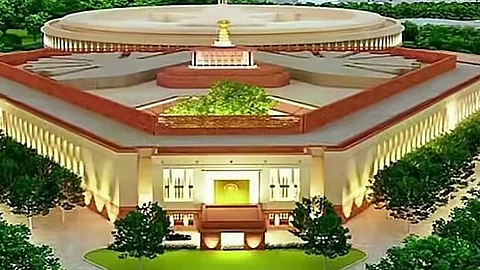

The Union Ministry of Tourism has not conducted any study to assess the impact of air pollution on tourism or to determine whether tourists are experiencing health issues due to pollution, Gajendra Singh Shekhawat, Union Minister of Tourism, told the Rajya Sabha.
As of September 30, 2024, the total available Environmental Compensation (EC) funds stand at Rs 439.24 crore, Kirti Vardhan Singh, Minister of State in the Union Ministry of Environment, Forest and Climate Change, told the Rajya Sabha.
Of this, Rs 202.81 crore has been disbursed to state boards, Rs 184.23 crore has been earmarked for specific purposes, and Rs 52.2 crore remains with the Central Pollution Control Board (CPCB), as per the directives of the National Green Tribunal (NGT), the minister stated.
Projects worth Rs 223.44 crore have already been sanctioned from the EC funds, accounting for more than 50 pr cent of the total amount. Additionally, Rs 1.06 crore was spent on “strengthening of computer network in CPCB,” which constitutes just 0.17 per cent of the total NGT funds and falls within the scope of activities approved by the tribunal, he said.
According to information received from the Kerala government, 926 people were injured, and 82 people lost their lives due to human-wildlife conflict in 2024, Singh told the Rajya Sabha.
A total of 130 new protected areas, including wildlife sanctuaries, national parks, conservation reserves, and community reserves, have been declared in the country between 2019 and July 2023, according to the ENVIS Centre on Wildlife & Protected Areas database, Singh told the Rajya Sabha.
A total of 102 wetlands have been notified under the Wetlands (Conservation and Management) Rules, 2017 in India, Singh told the Rajya Sabha.
The generation of electronic waste has been increasing over the years due to the rising use of electrical and electronic equipment (EEE), Singh told the Rajya Sabha.
E-waste generation is directly linked to economic growth and technological advancements. Currently, 322 recyclers and 72 refurbishers are registered with the CPCB to provide recycling and refurbishing services, he stated.
As of February 9, 2025, the reported processing capacity of the 322 registered recyclers stands at 22,08,918.064 tonnes per annum, while the 72 registered refurbishers have a processing capacity of 92,042.18 tonnes per annum, the minister said.
A National Environmental Health Profile Study has been commissioned to assess the impact of air pollution on human health in 20 selected cities across India, including Delhi, Singh told the Rajya Sabha.
The government launched the National Air Quality Index (AQI) in 2015, which consolidates air quality data for eight pollutants into a single number for better communication of air quality status. The AQI categorises air quality into six levels — good, satisfactory, moderately polluted, poor, very poor, and severe — based on ambient pollutant concentrations and their likely health effects, he stated.
A daily AQI bulletin for 289 cities is published on the Central Pollution Control Board’s website and the SAMEER app.
At the start of the mission in August 2019, only 32.3 million rural households had tap water connections, C R Paatil, Union minister of Jal Shakti, told the Lok Sabha.
As of February 10, 2025, states and Union Territories have reported providing an additional 122.2 million rural households with tap water connections under the Jal Jeevan Mission. Consequently, out of the total 19.37 crore rural households in the country, over 154.5 million (79.79 per cent) now have access to tap water.
According to the Annual Ground Water Quality Report 2024 by the Central Ground Water Board, localised occurrences of high electrical conductivity, nitrate, and fluoride levels exceeding the prescribed limits for drinking water have been reported in groundwater samples from isolated areas of West Bengal, Bihar, and Uttar Pradesh, Raj Bhushan Choudhary, Minister of State for Jal Shakti, told the Lok Sabha.
According to the 2022 Global Status Report for Buildings and Construction by the United Nations Environment Programme (UNEP), the building and construction sector accounted for 37 per cent of global carbon emissions in 2021, Tokhan Sahu, Minister of State in the Union Ministry of Housing and Urban Affairs, told the Lok Sabha.
Of this, 10 GtCO₂ (GtCO2 equals a billion tonnes of carbon dioxide) or 74 per cent emissions came from building operations, while 3.6 GtCO₂ (26 per cent) resulted from the production of building materials such as concrete, steel, aluminium, glass, and bricks.
As per the latest pre-monsoon 2024 data from the CGWB, arsenic contamination in excess of the prescribed limits has been reported in groundwater samples from isolated pockets of nine districts in Assam, namely Barpeta, Goalpara, Golaghat, Karbi Anglong, Kokrajhar, Lakhimpur, Sibsagar, Nalbari, and Karimganj, Choudhary told the Lok Sabha.